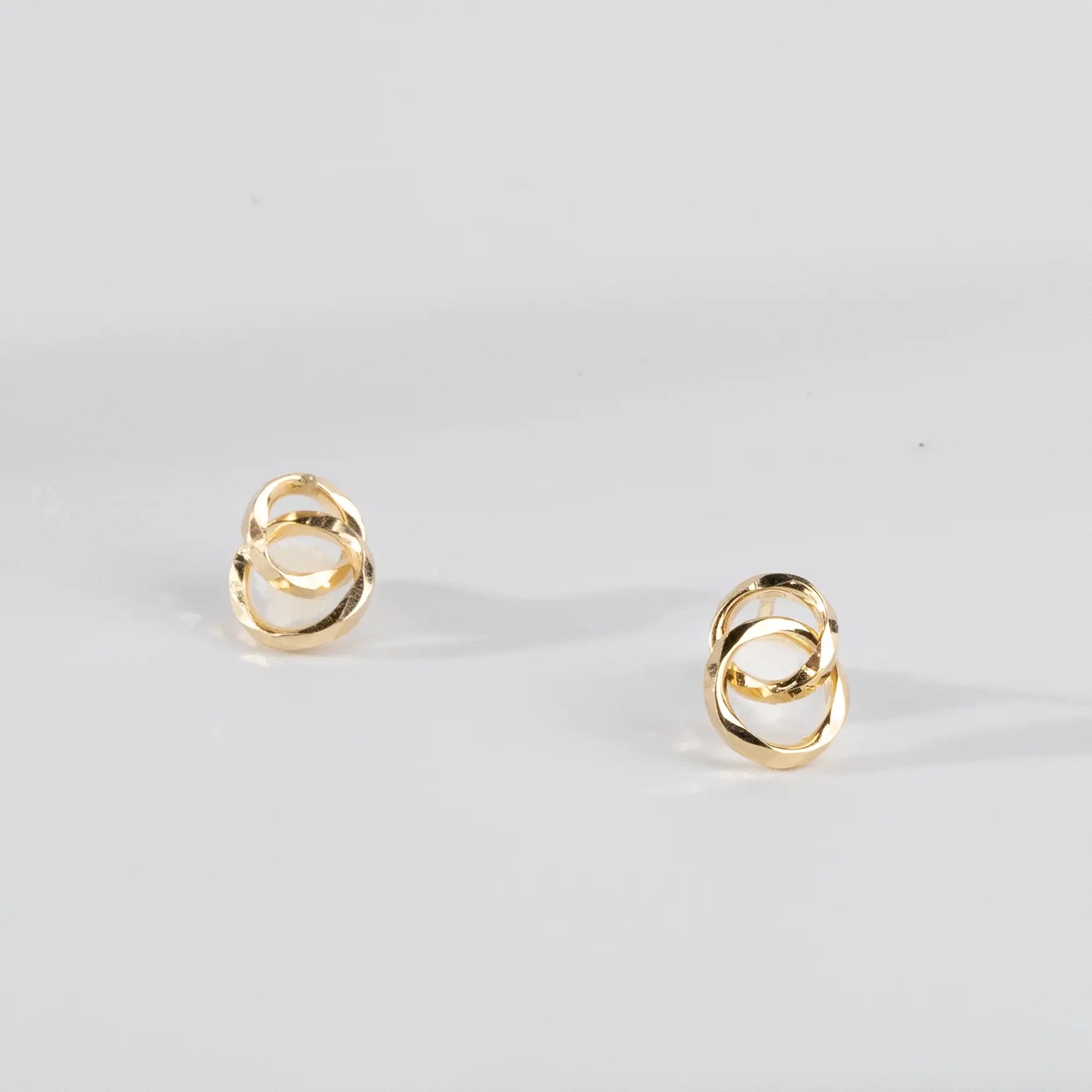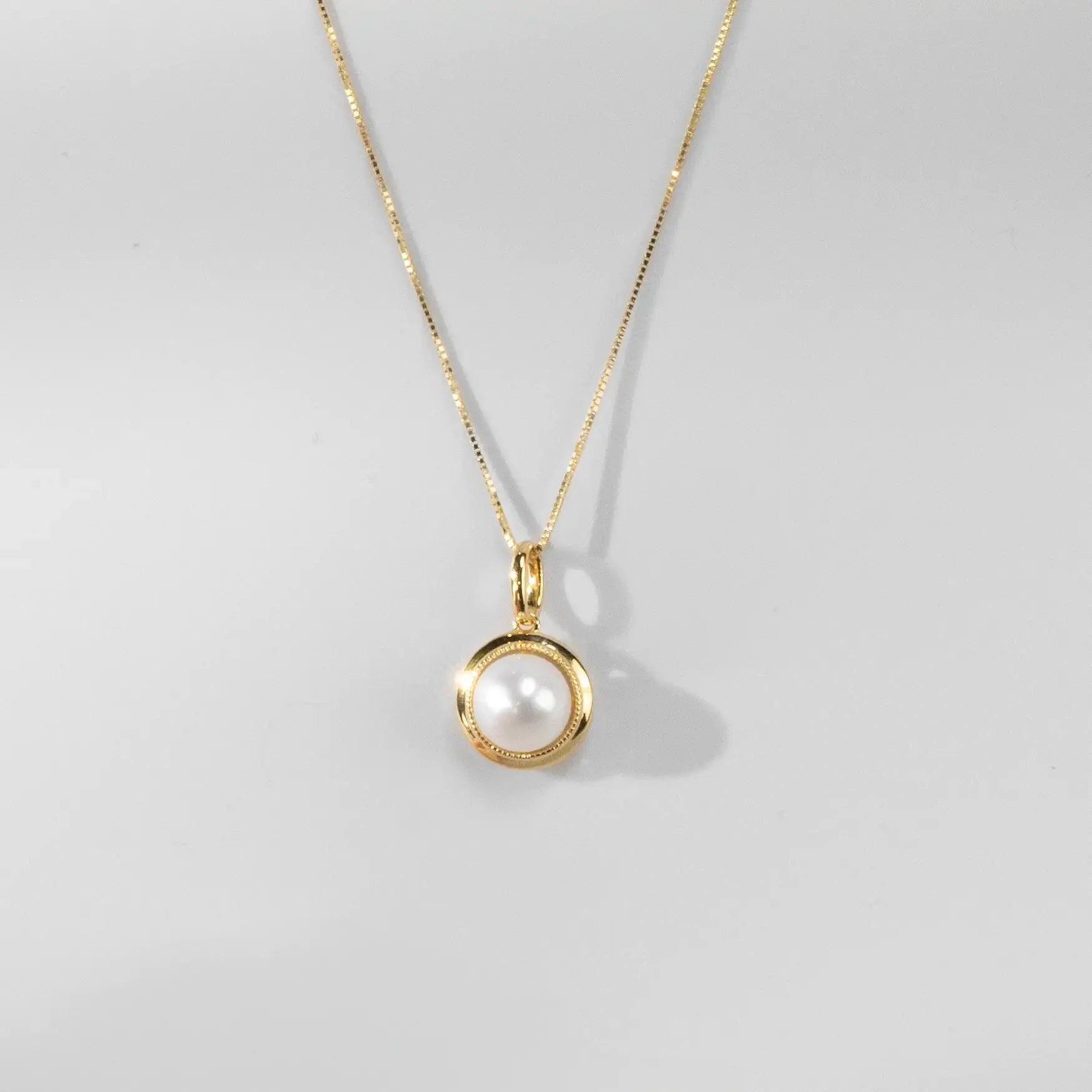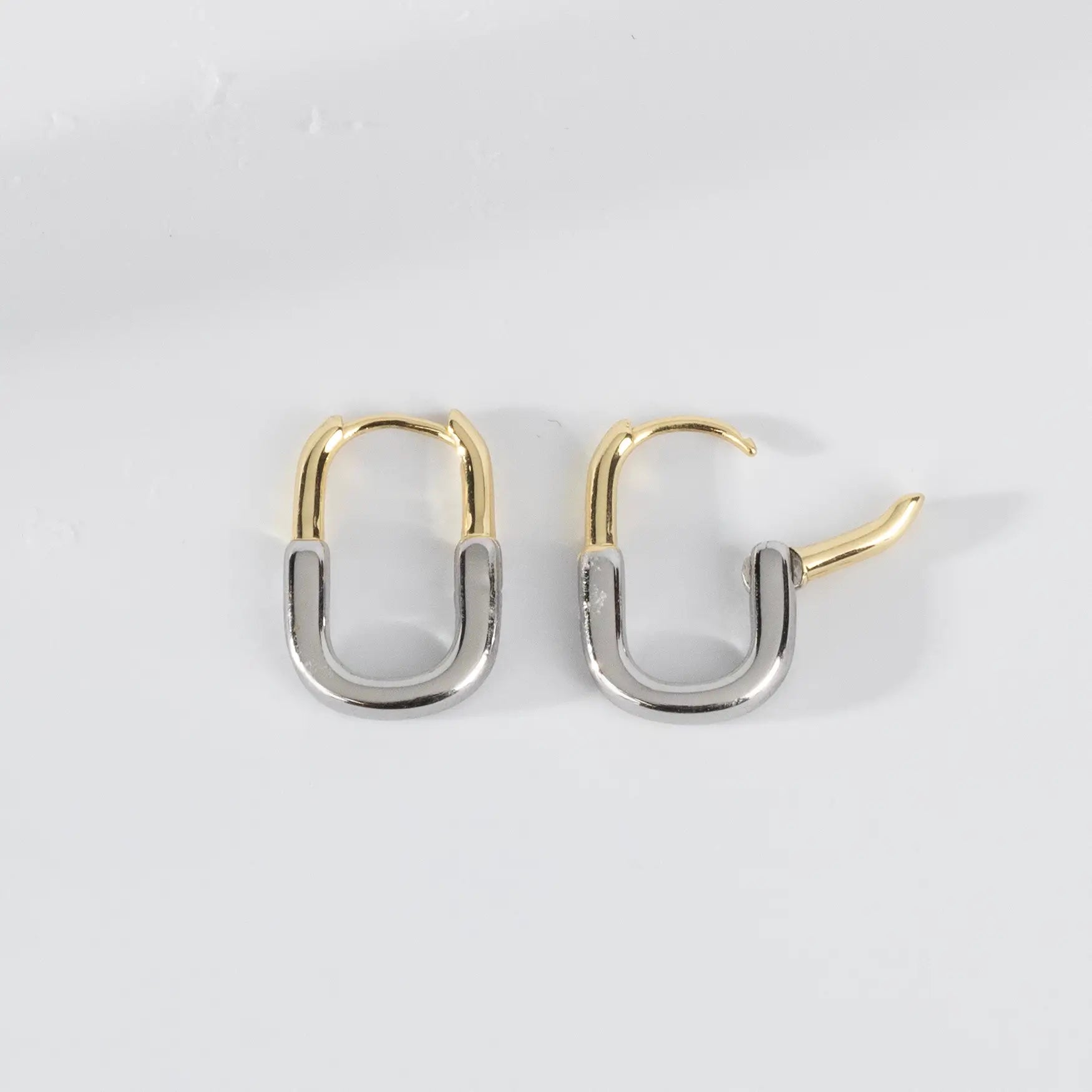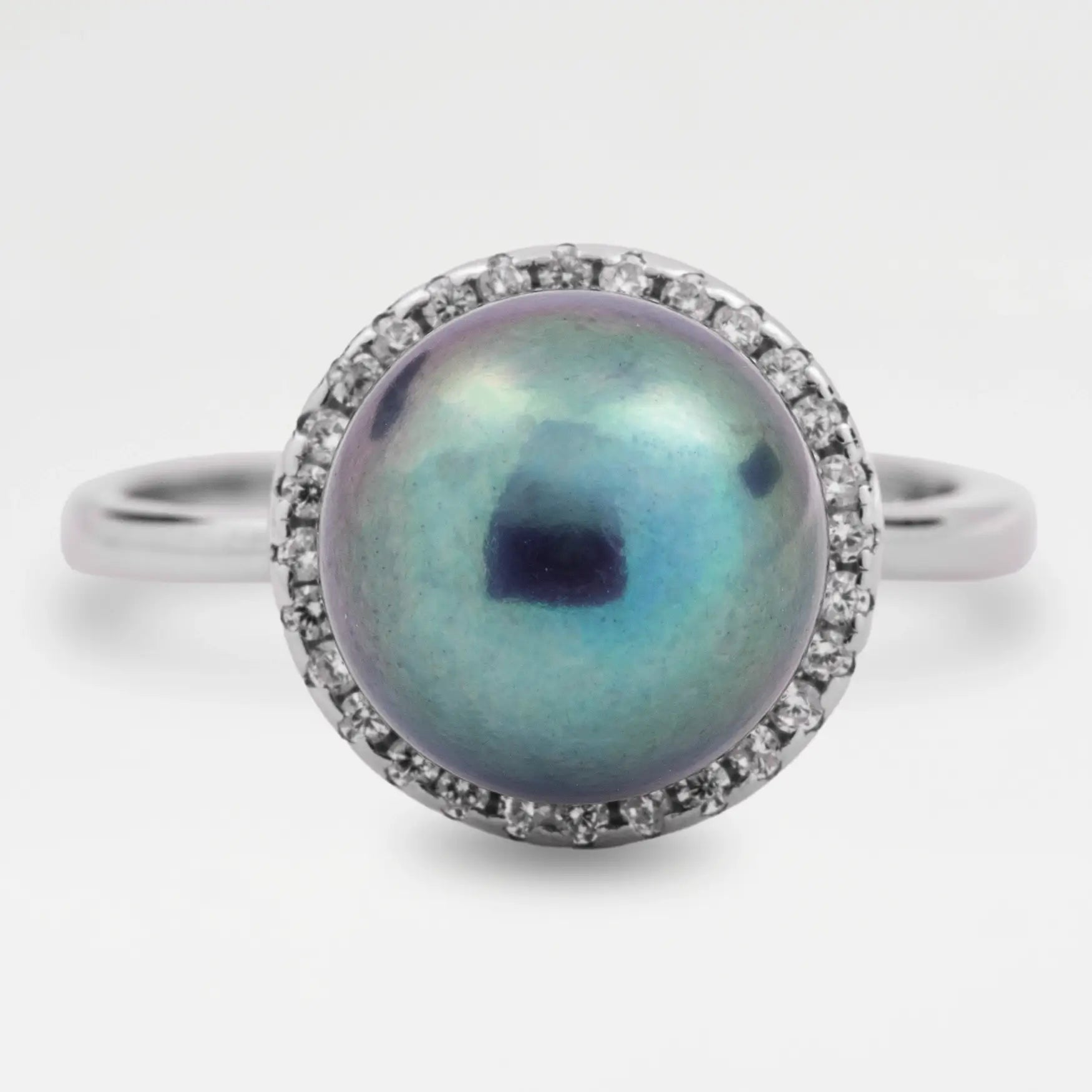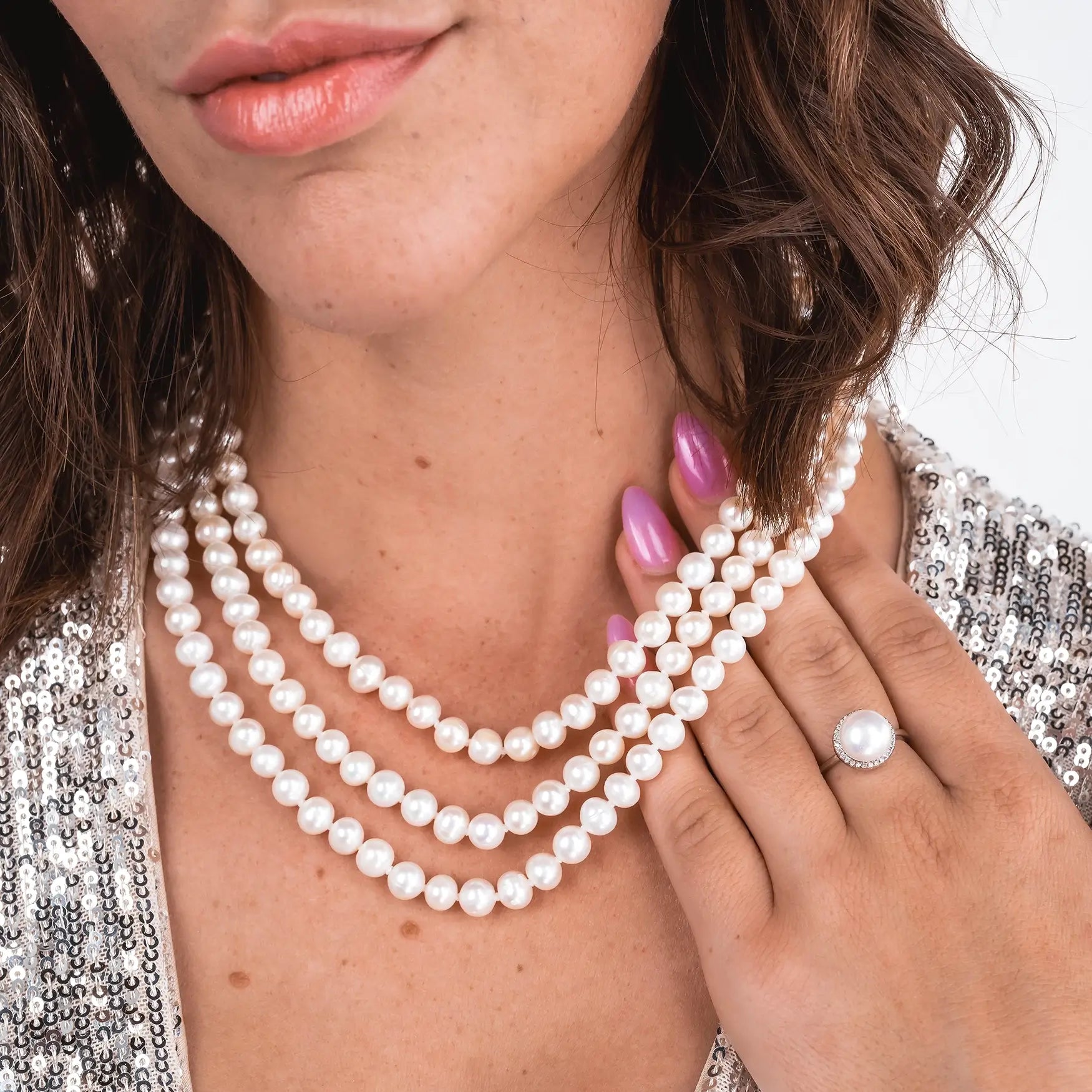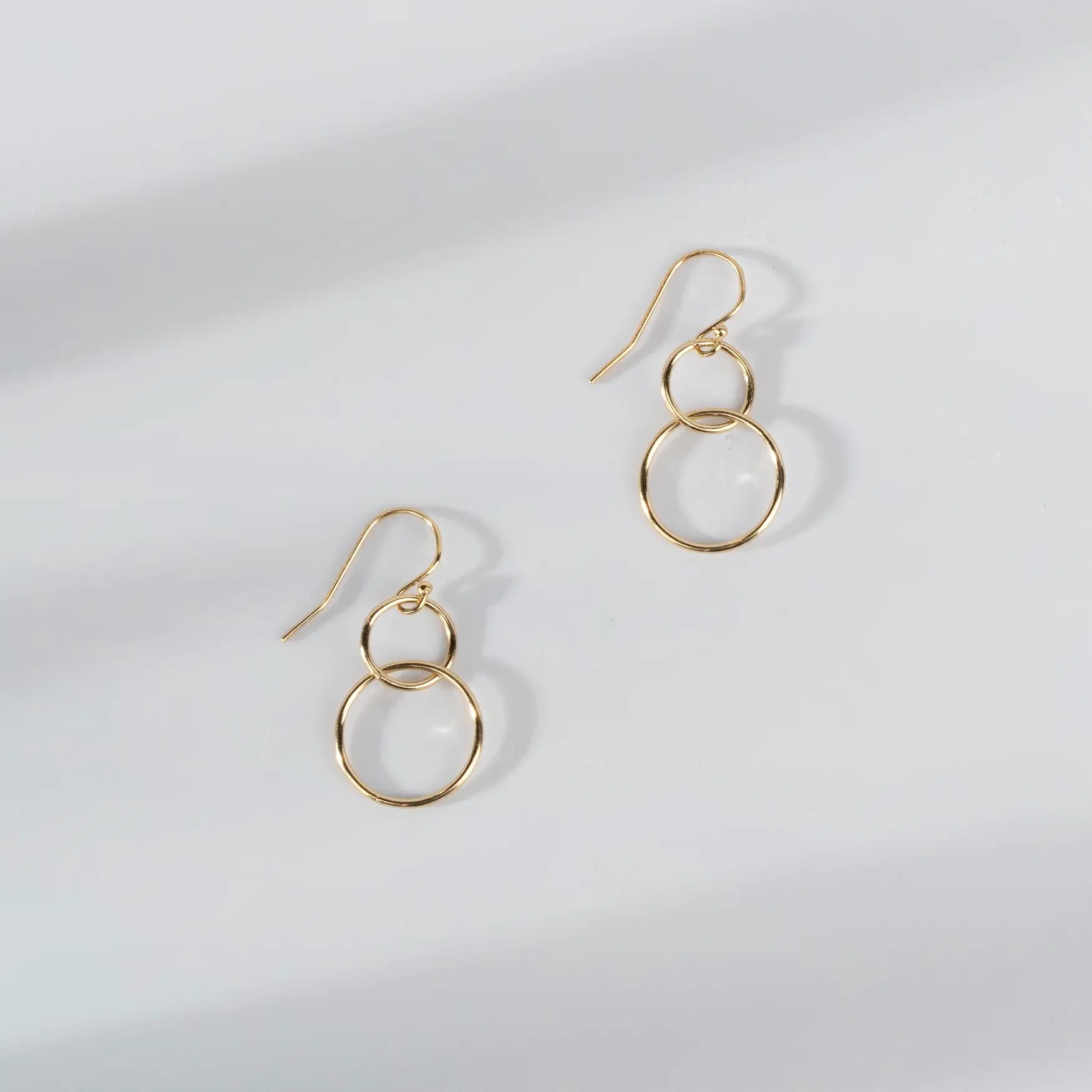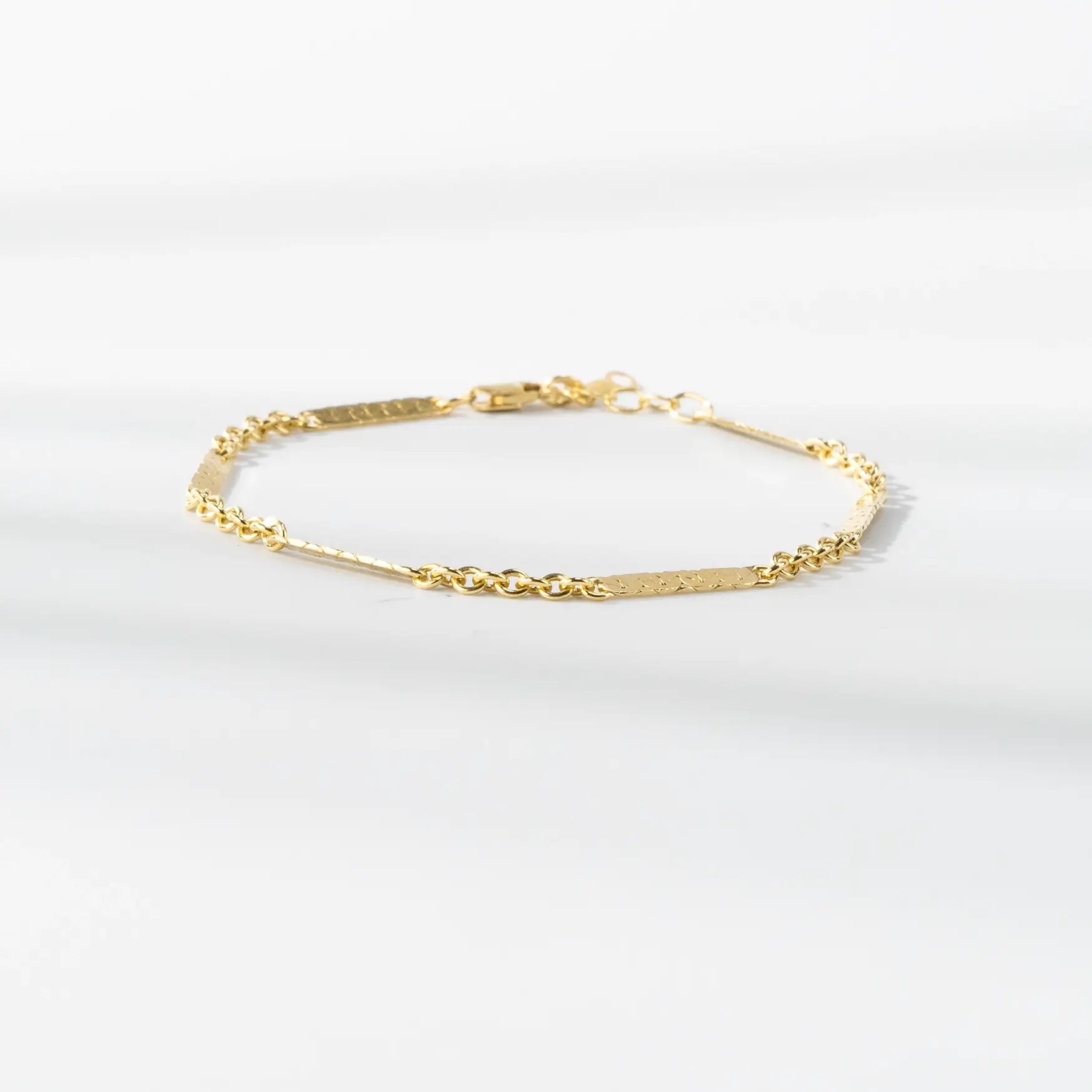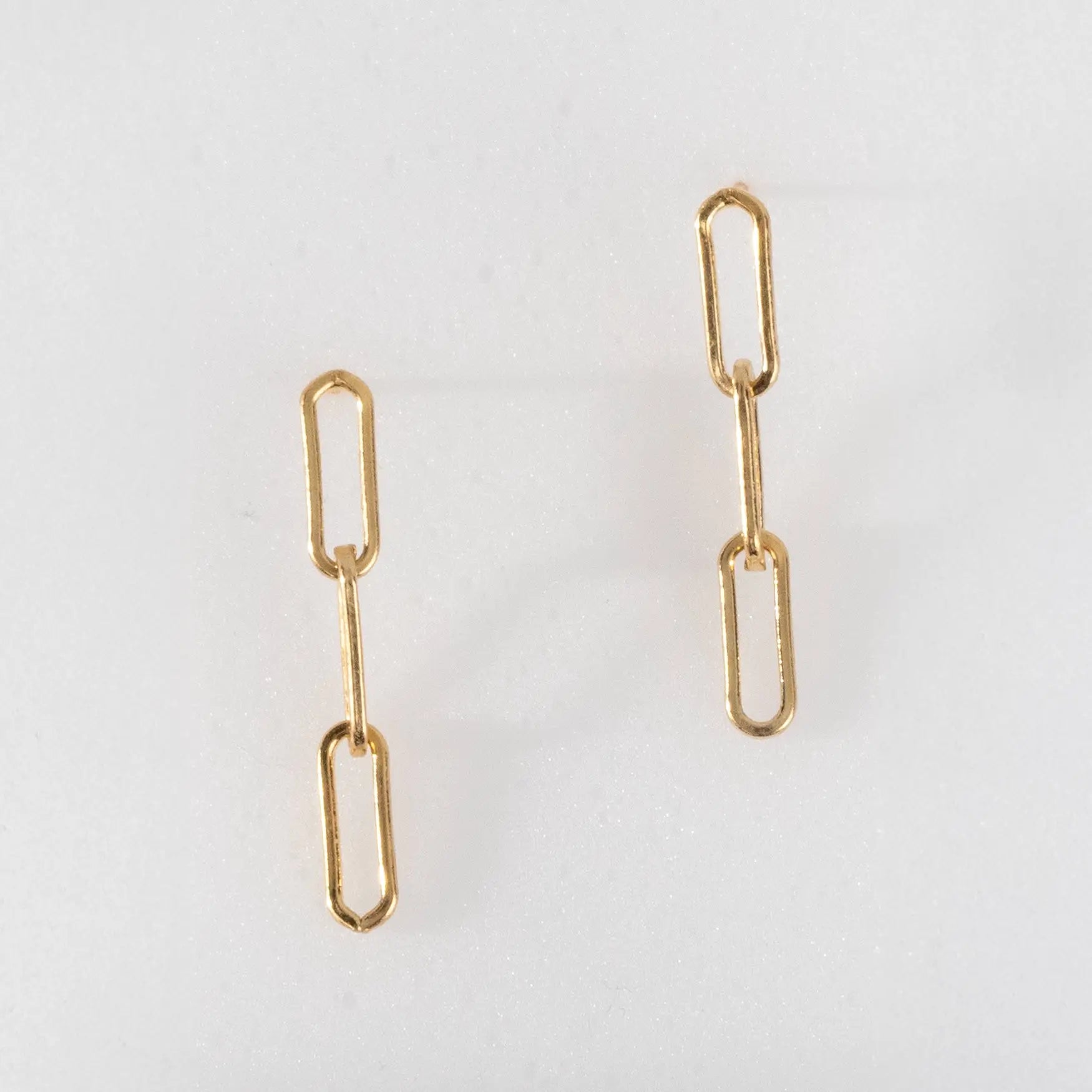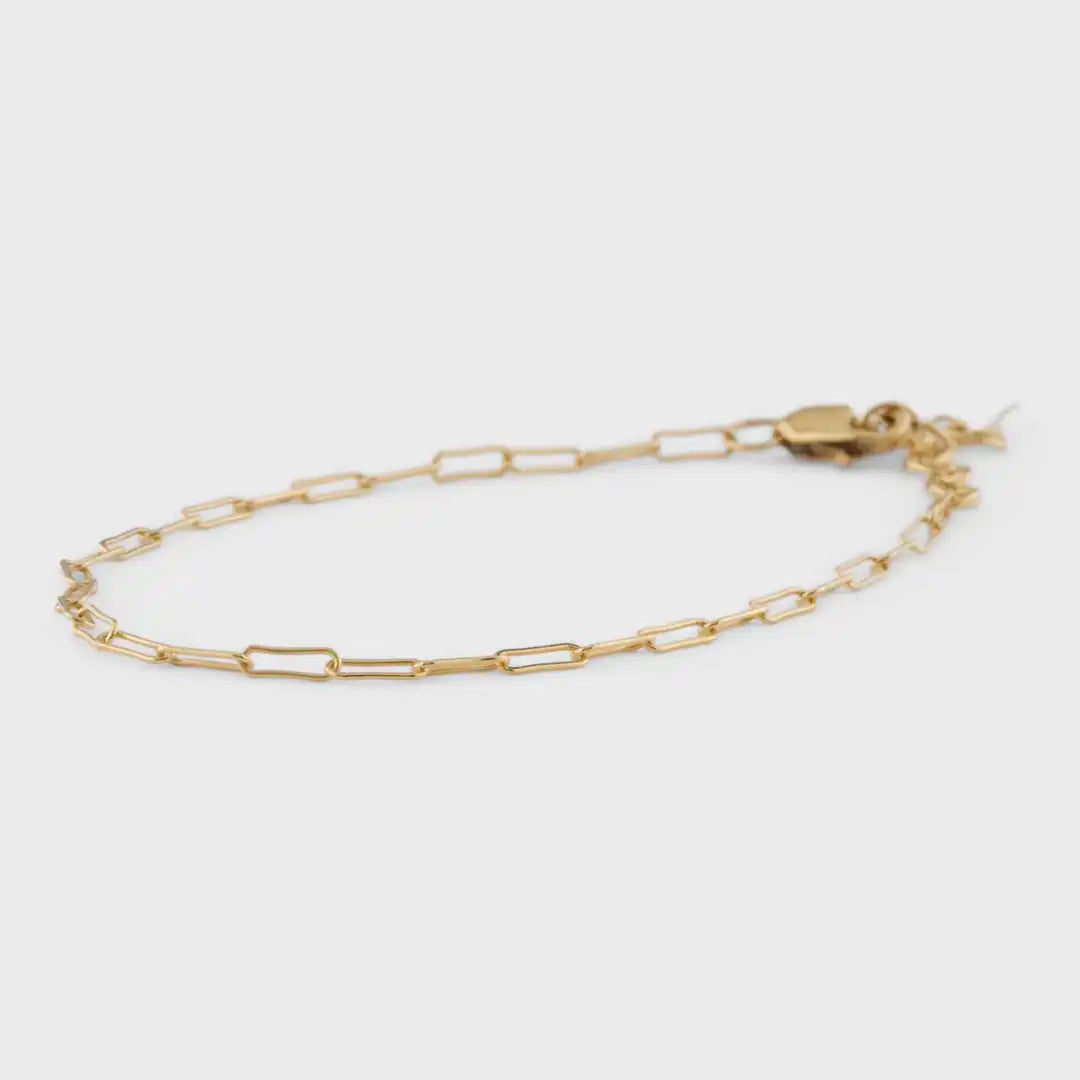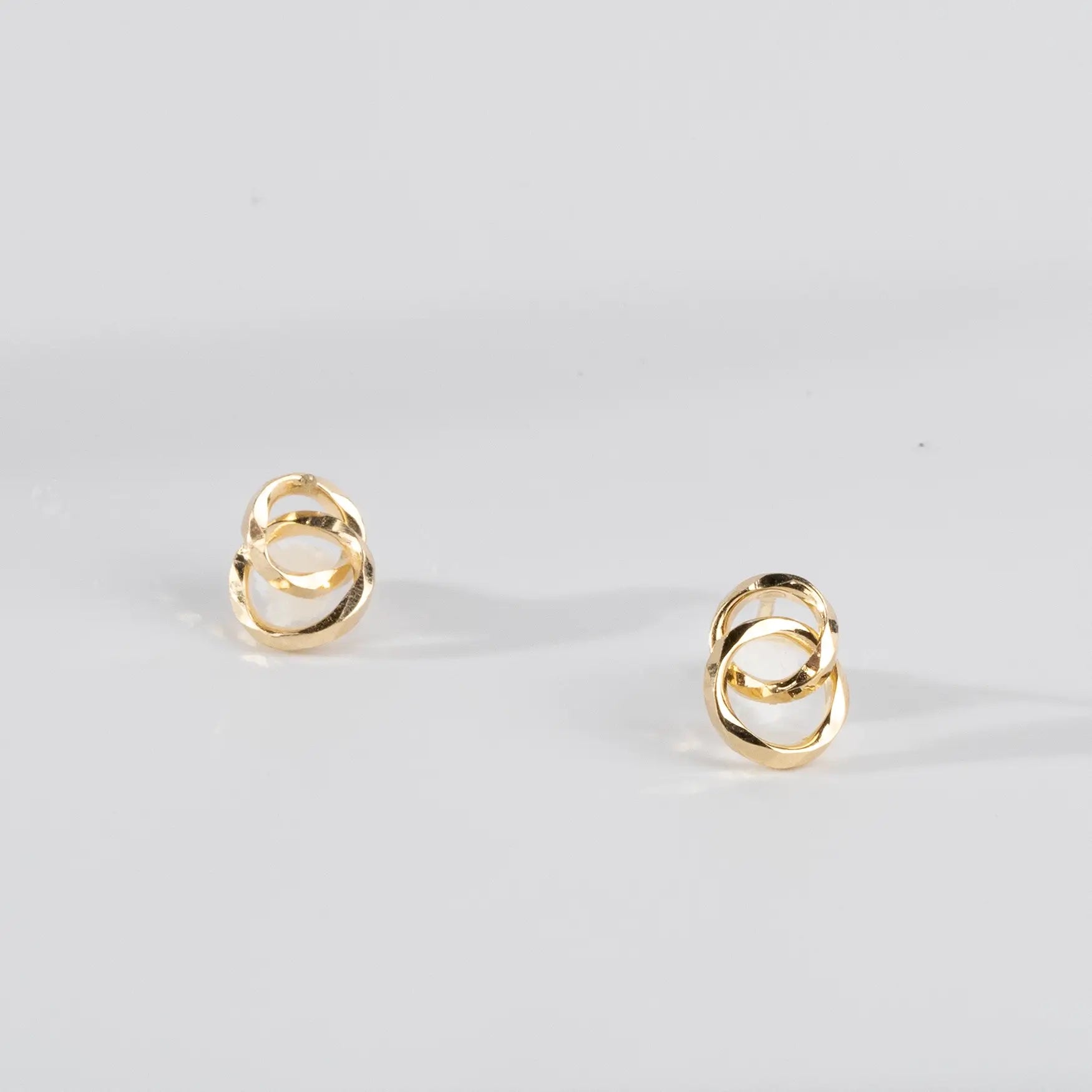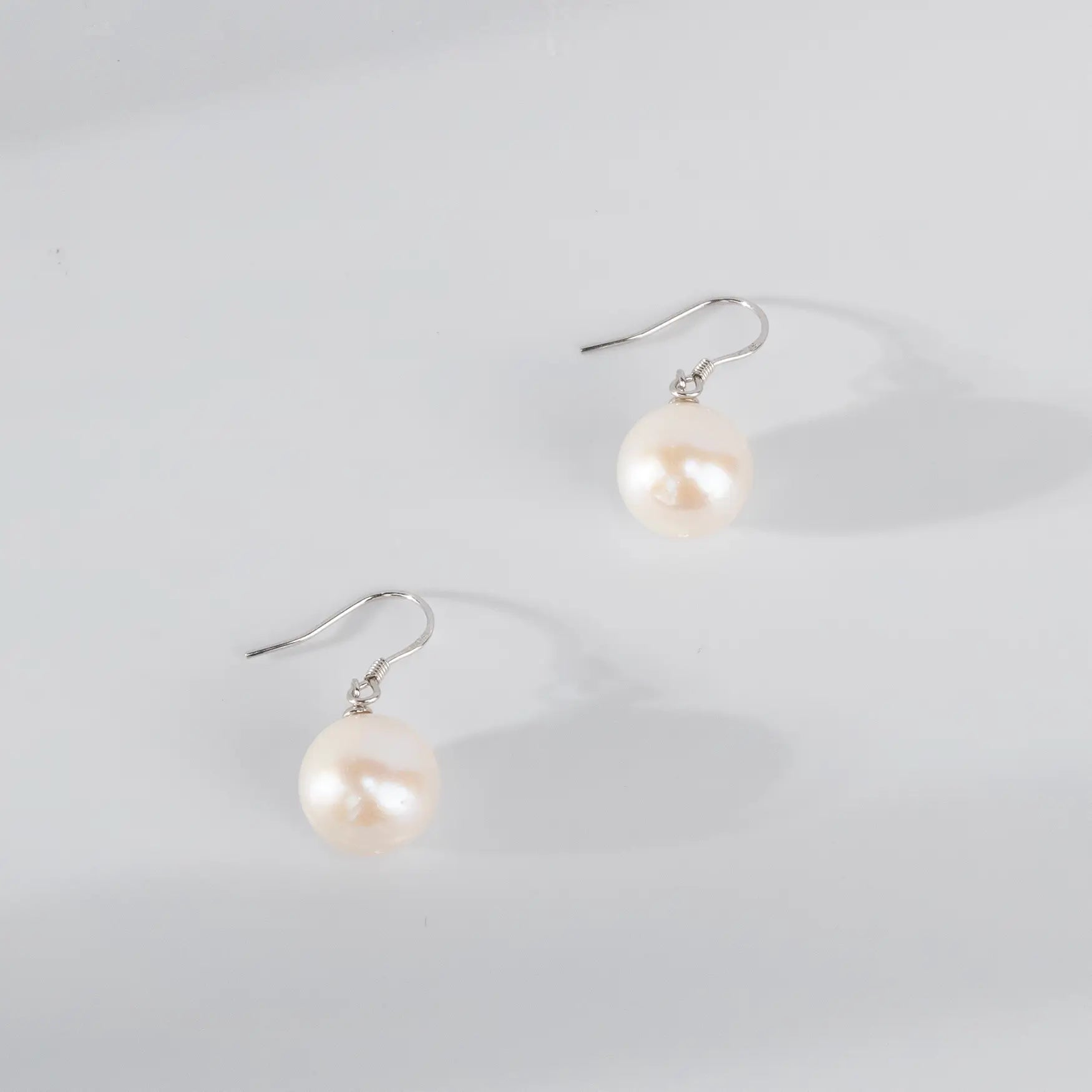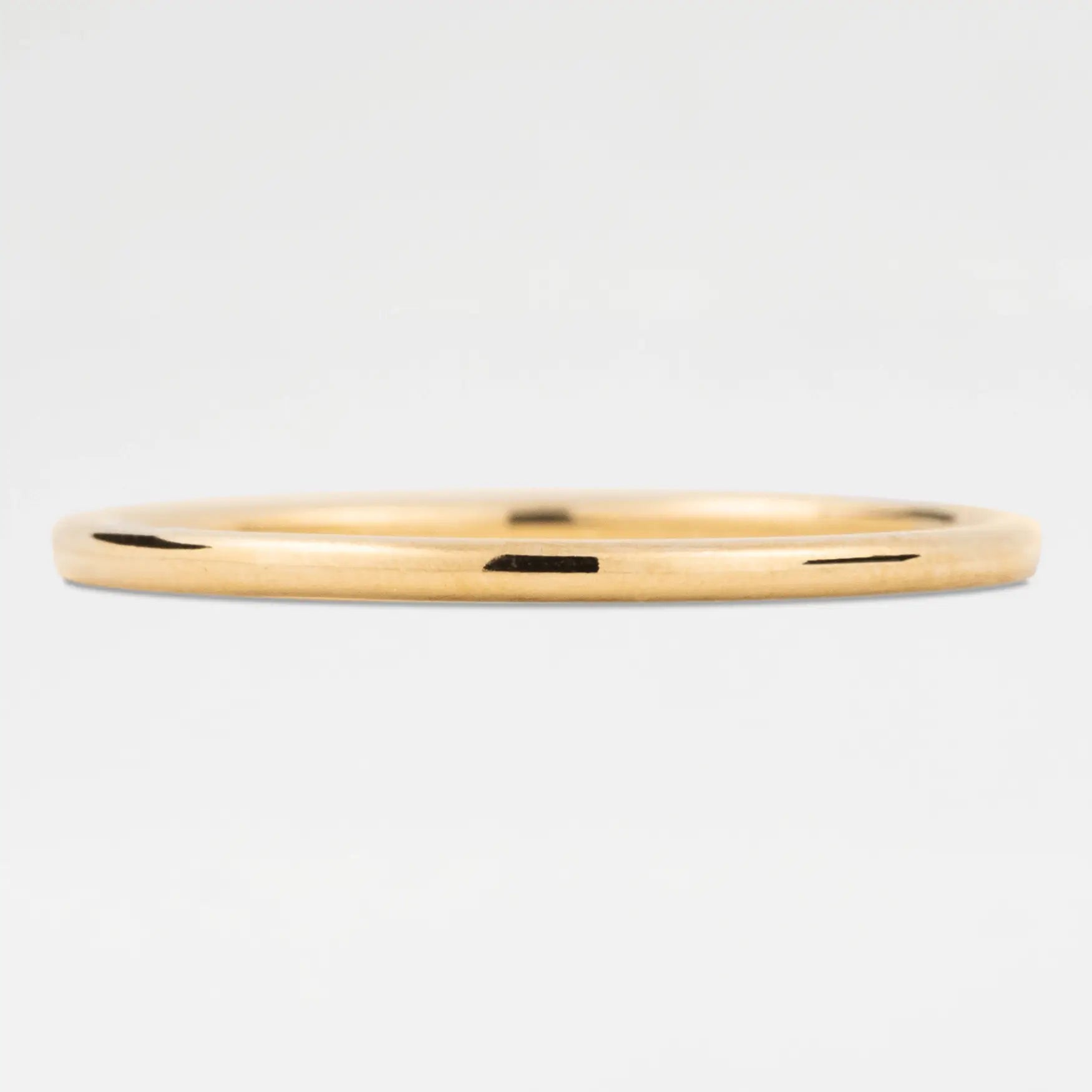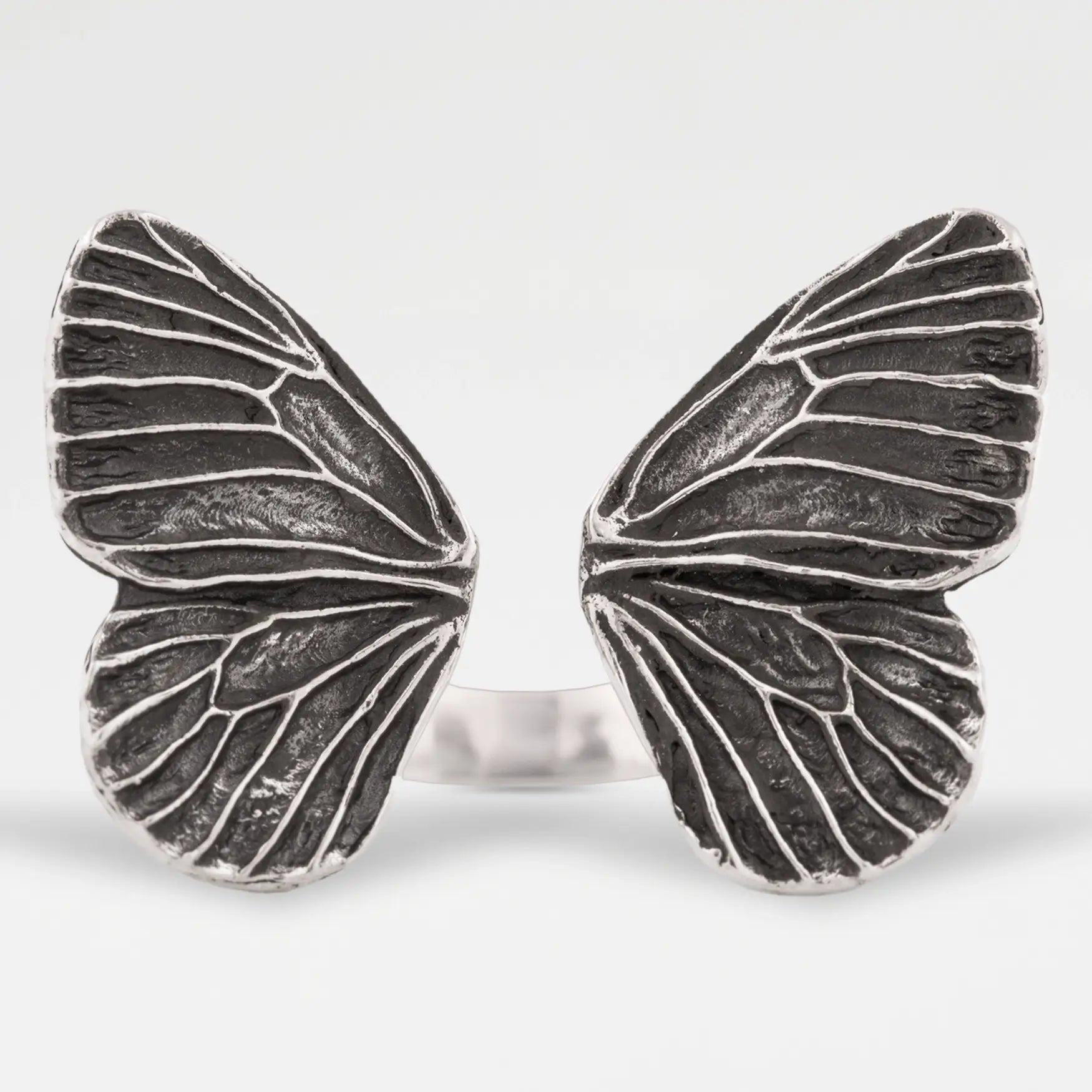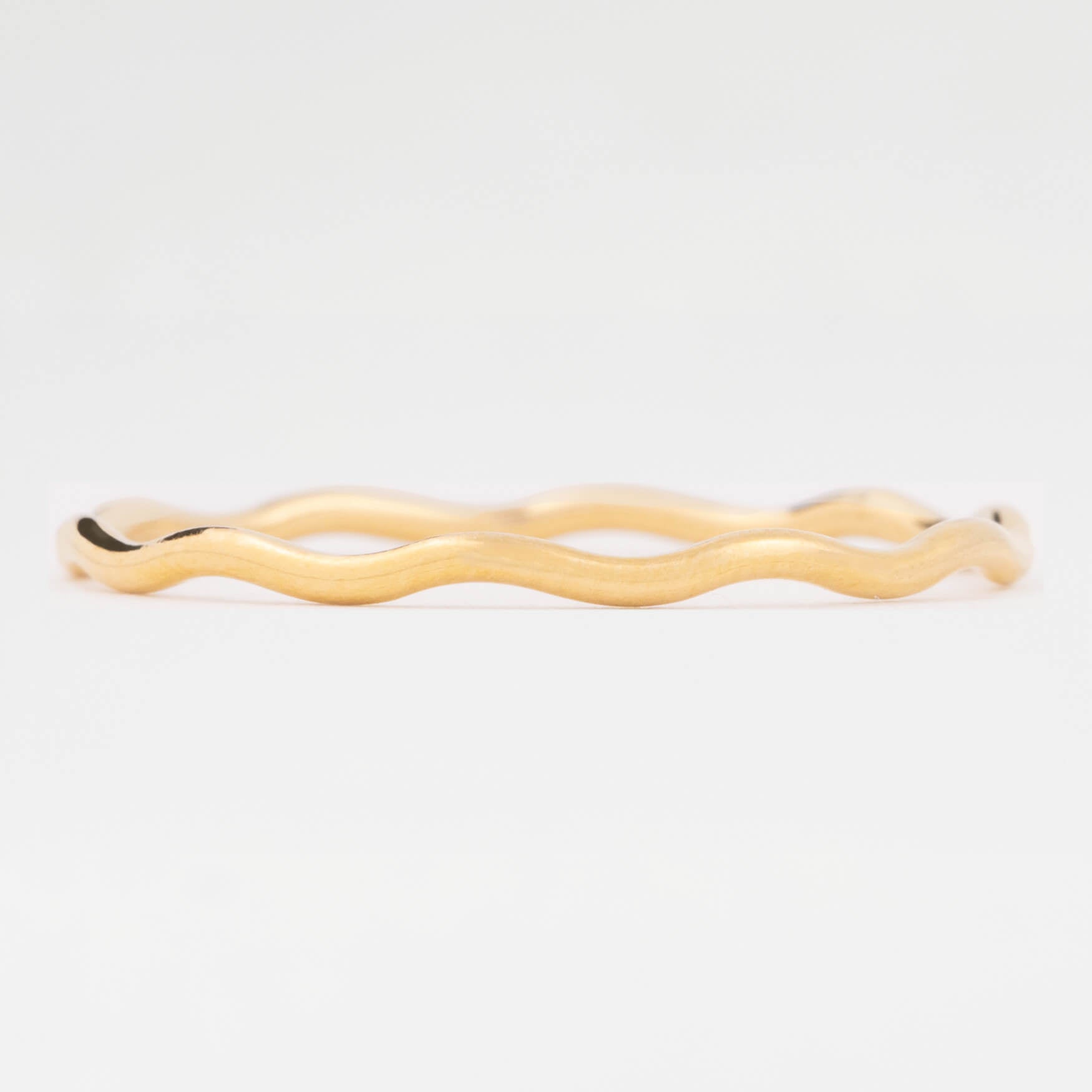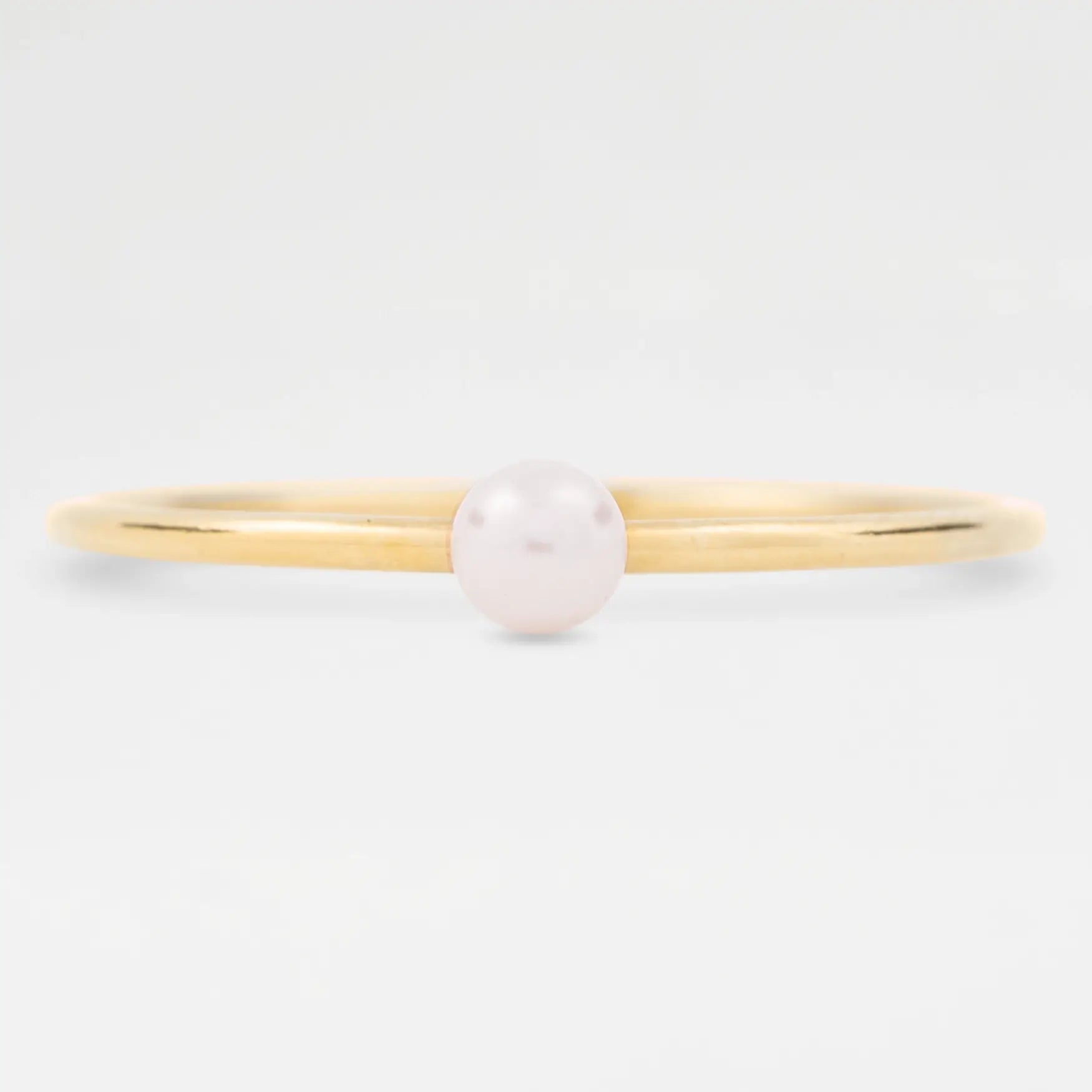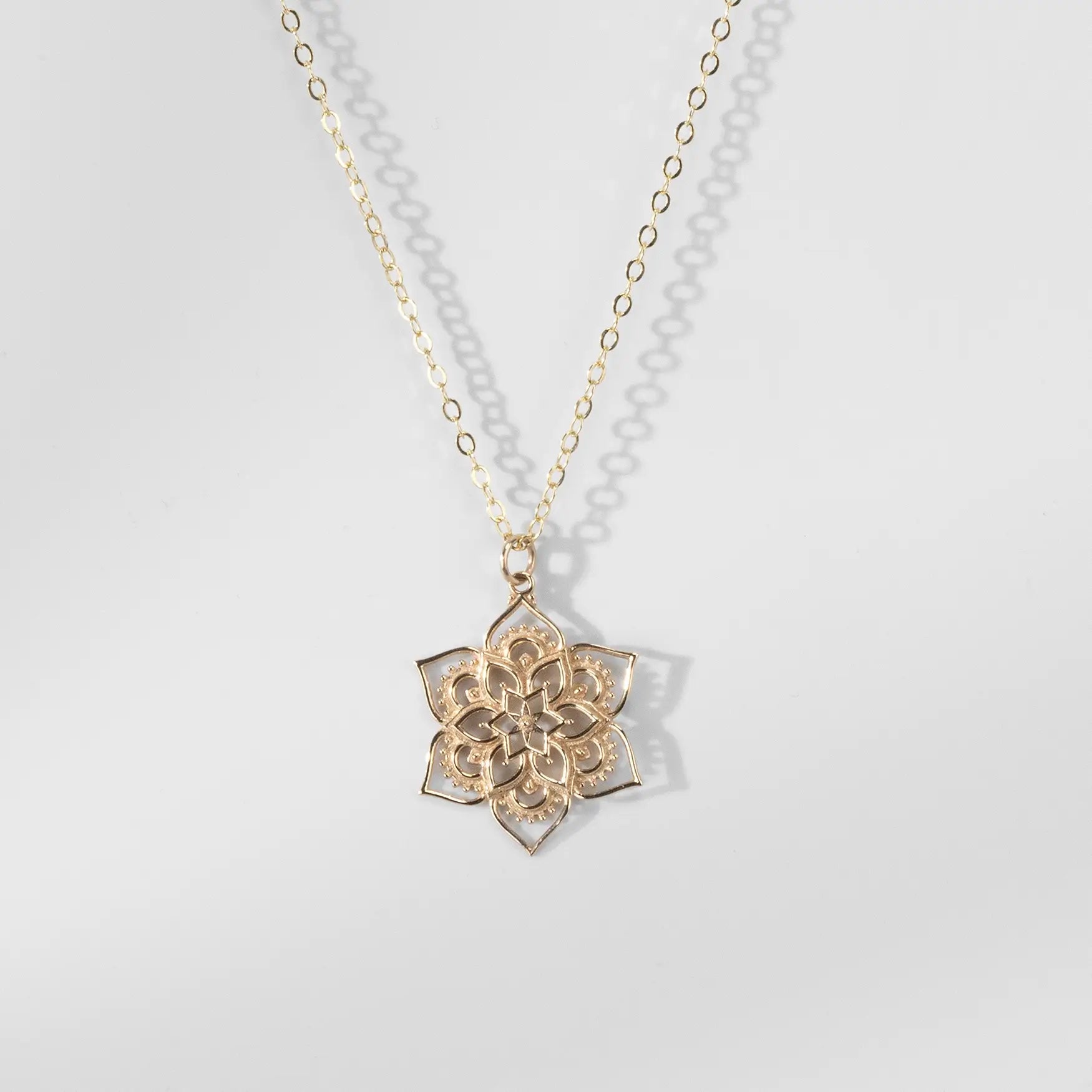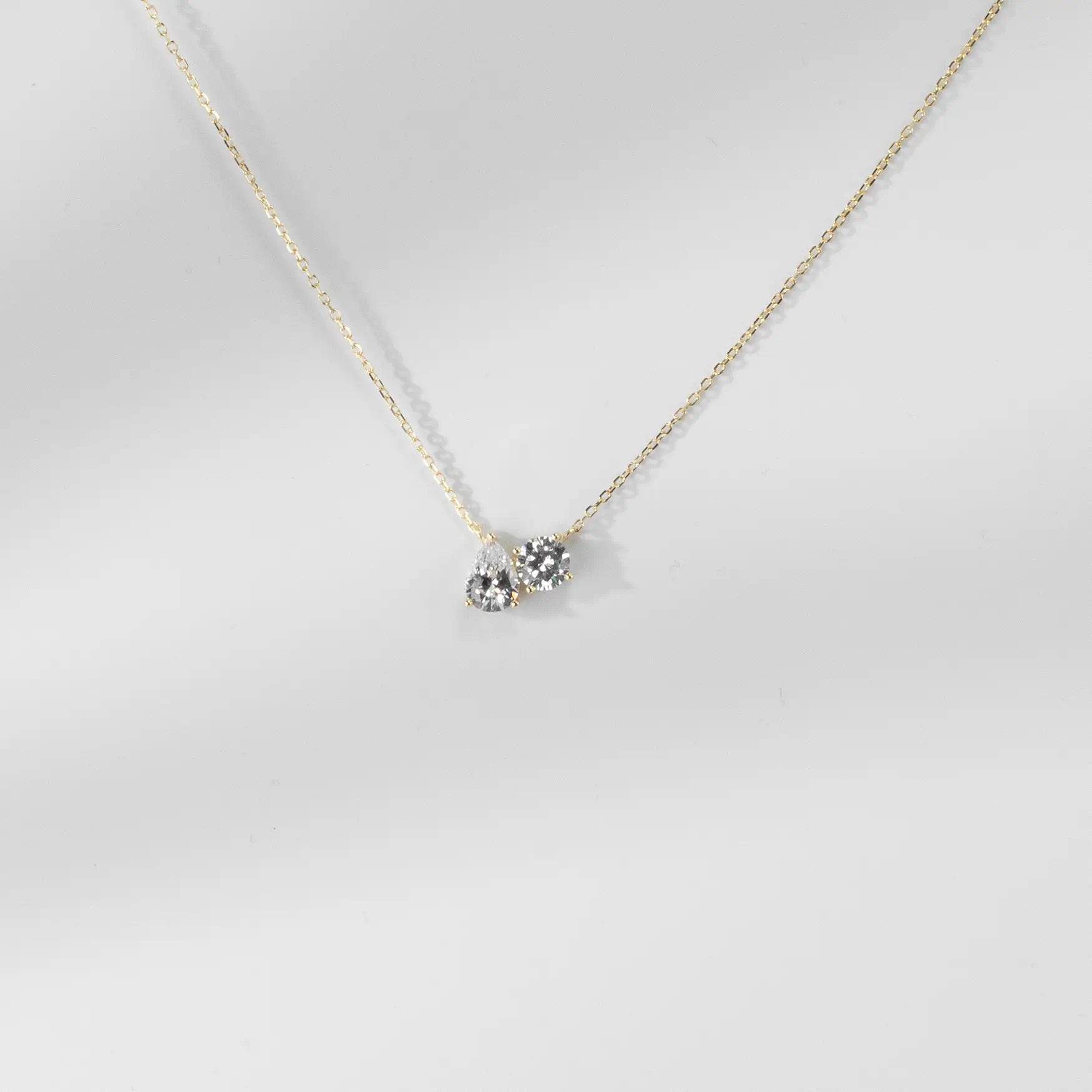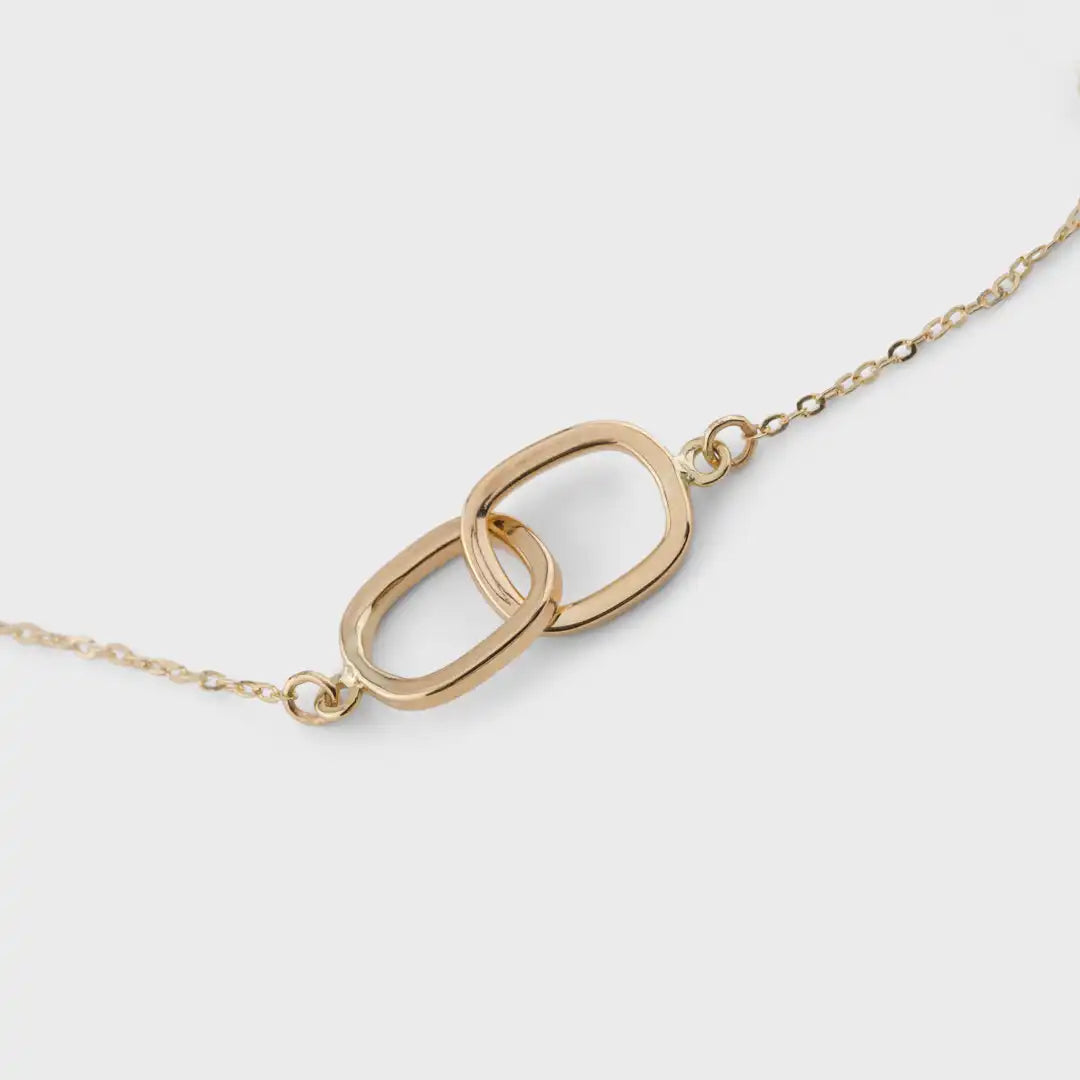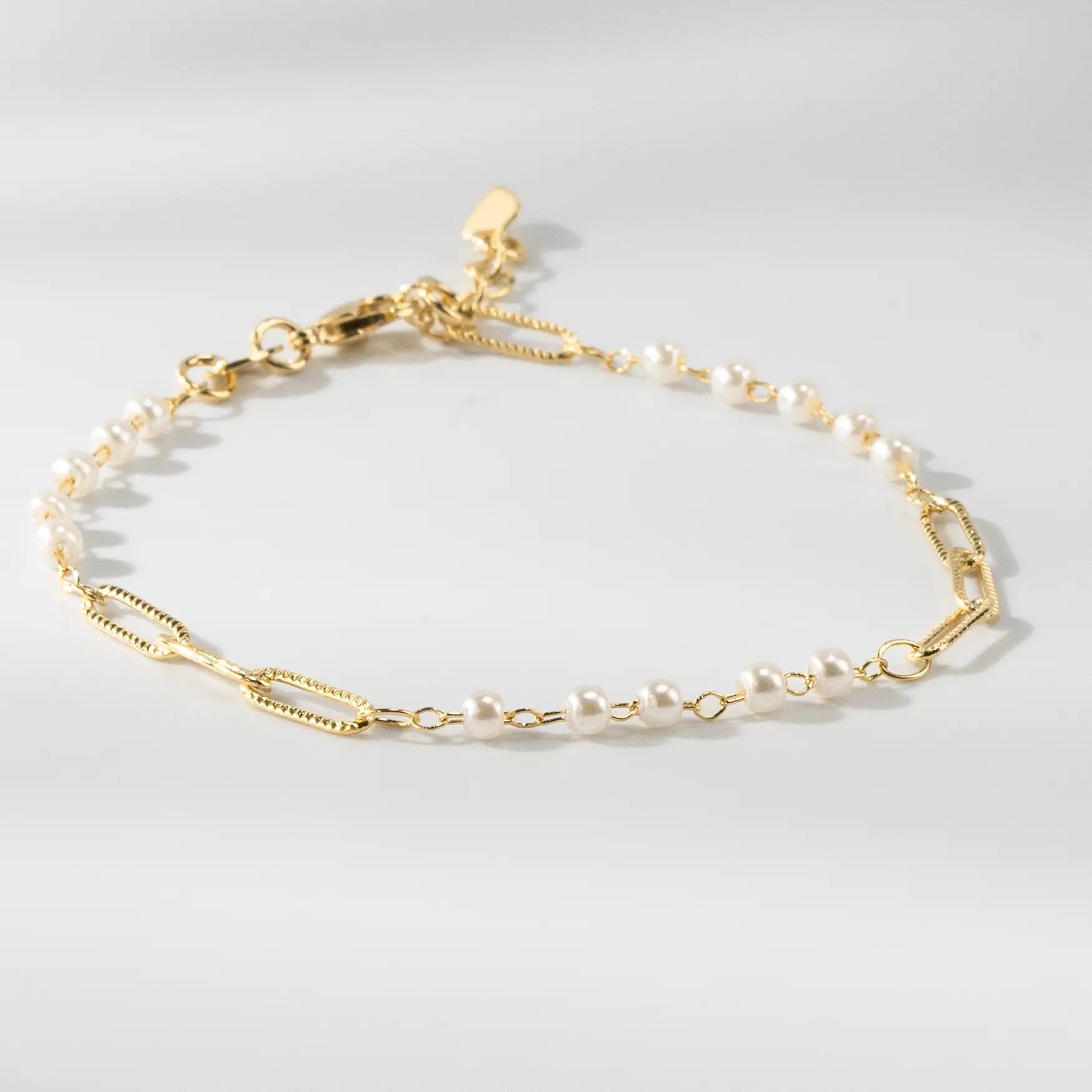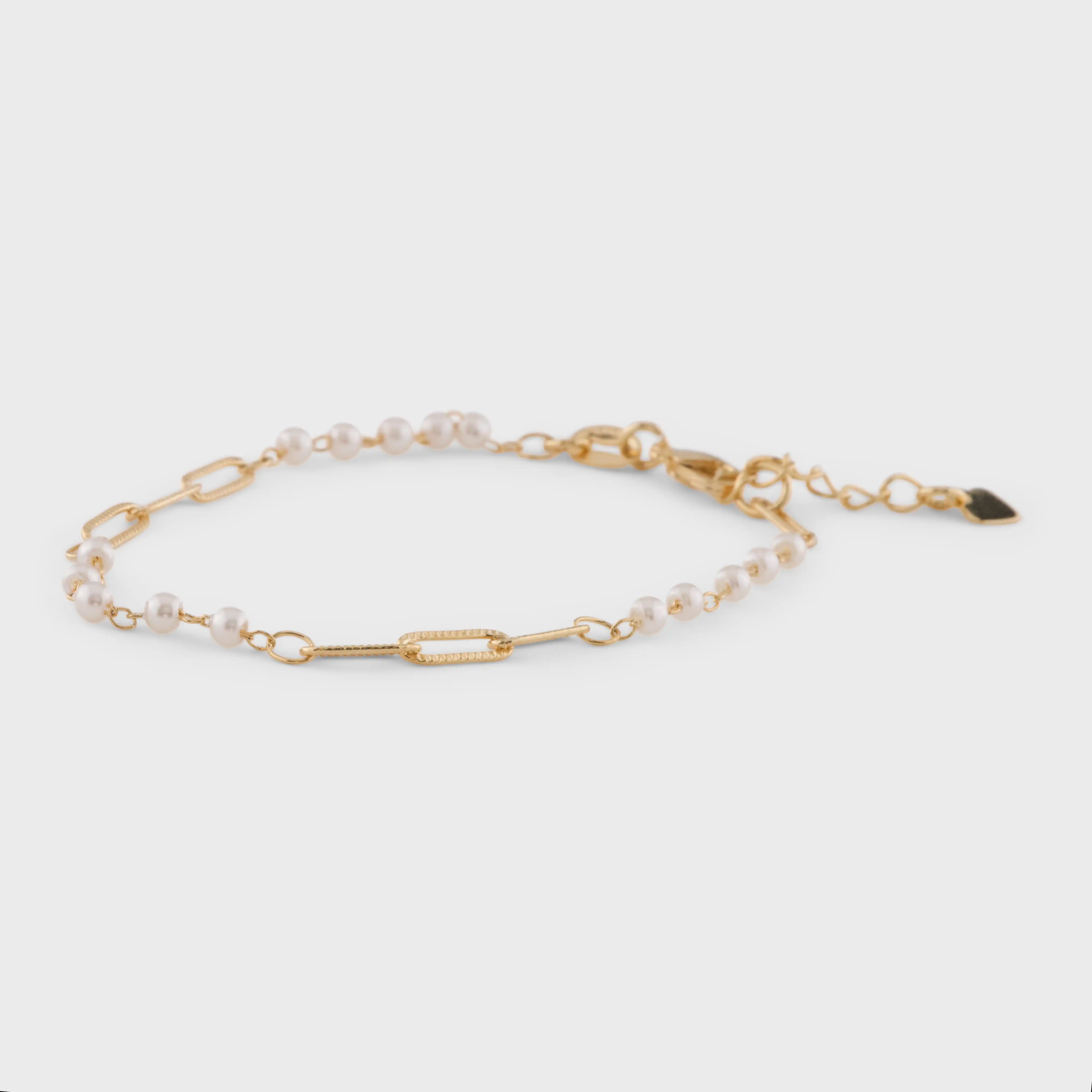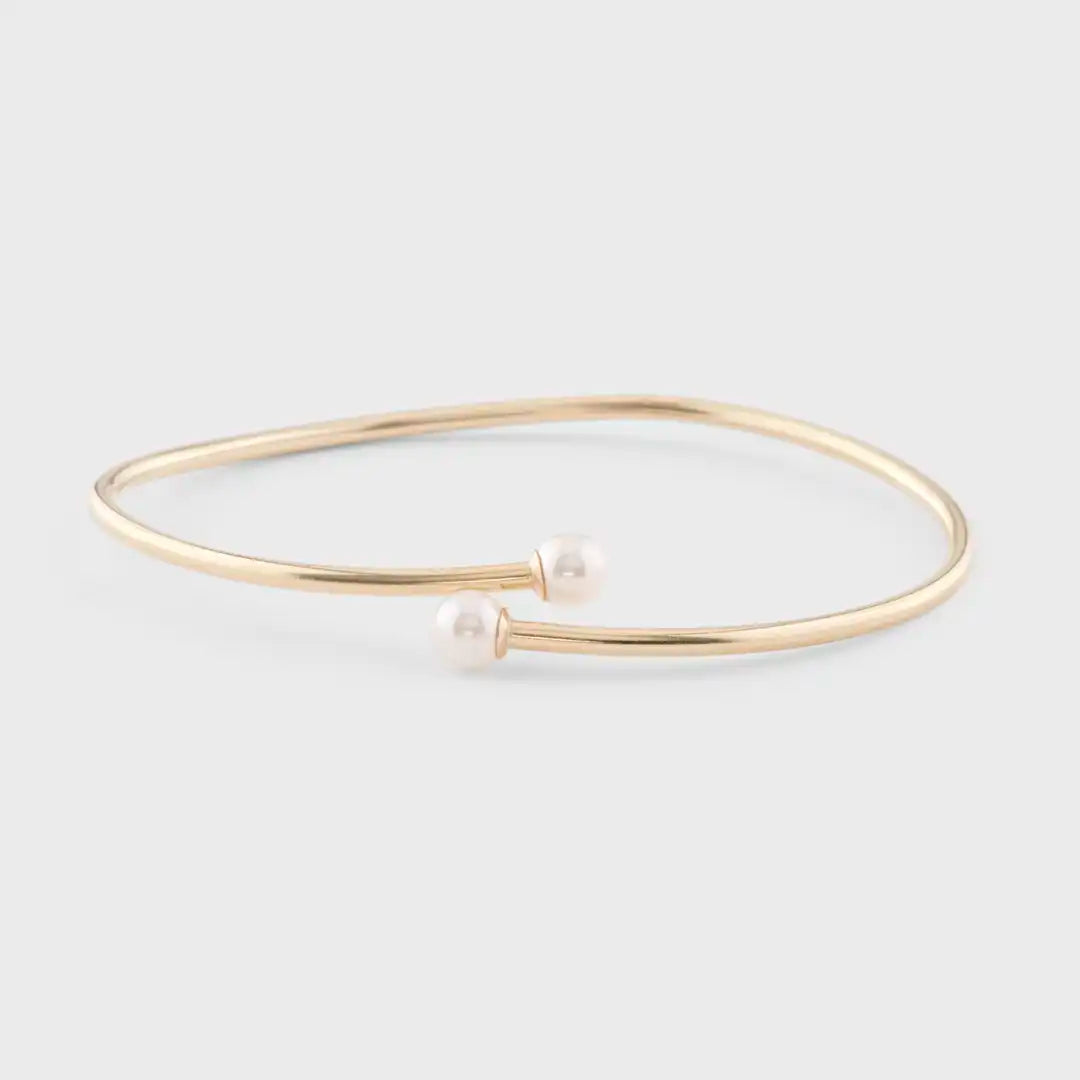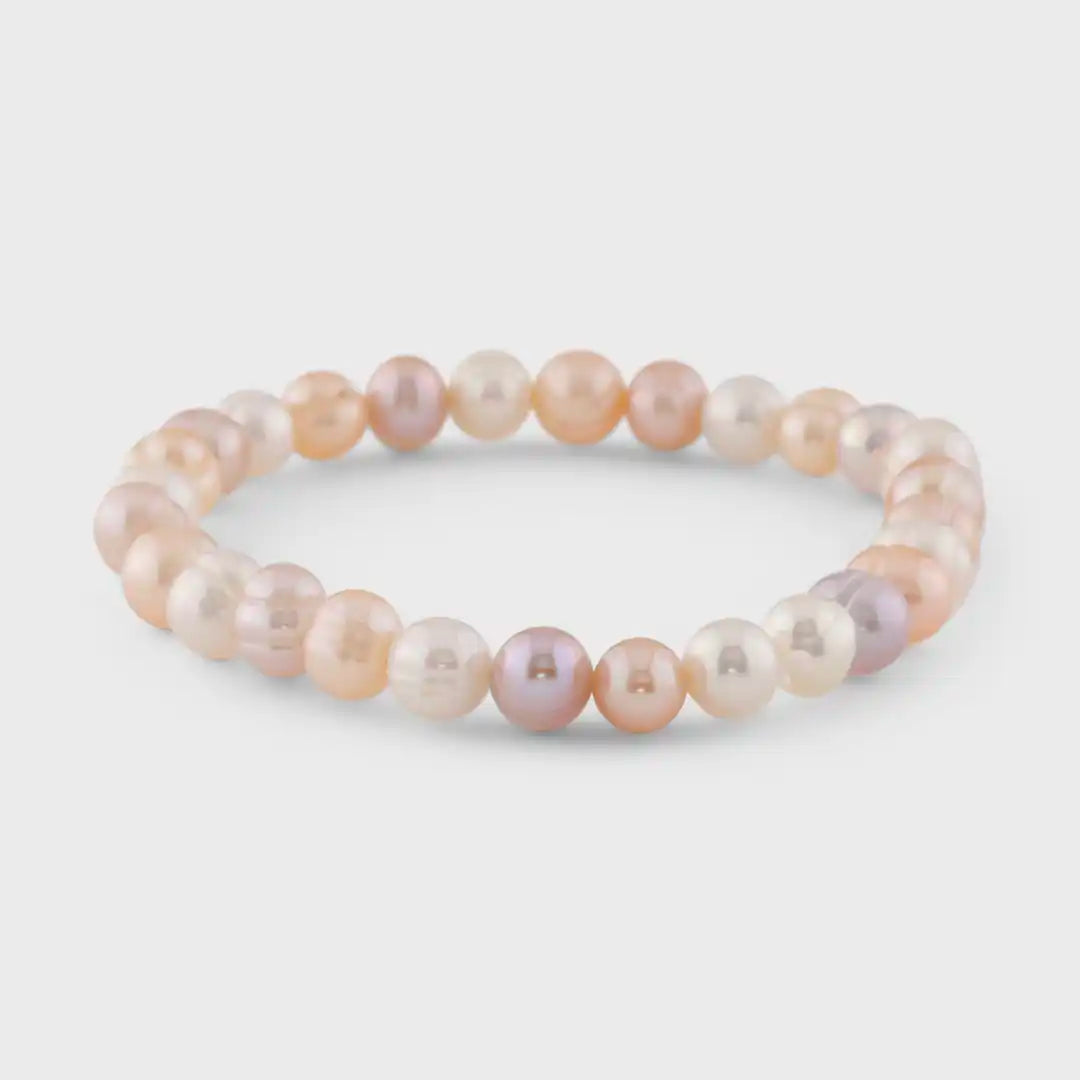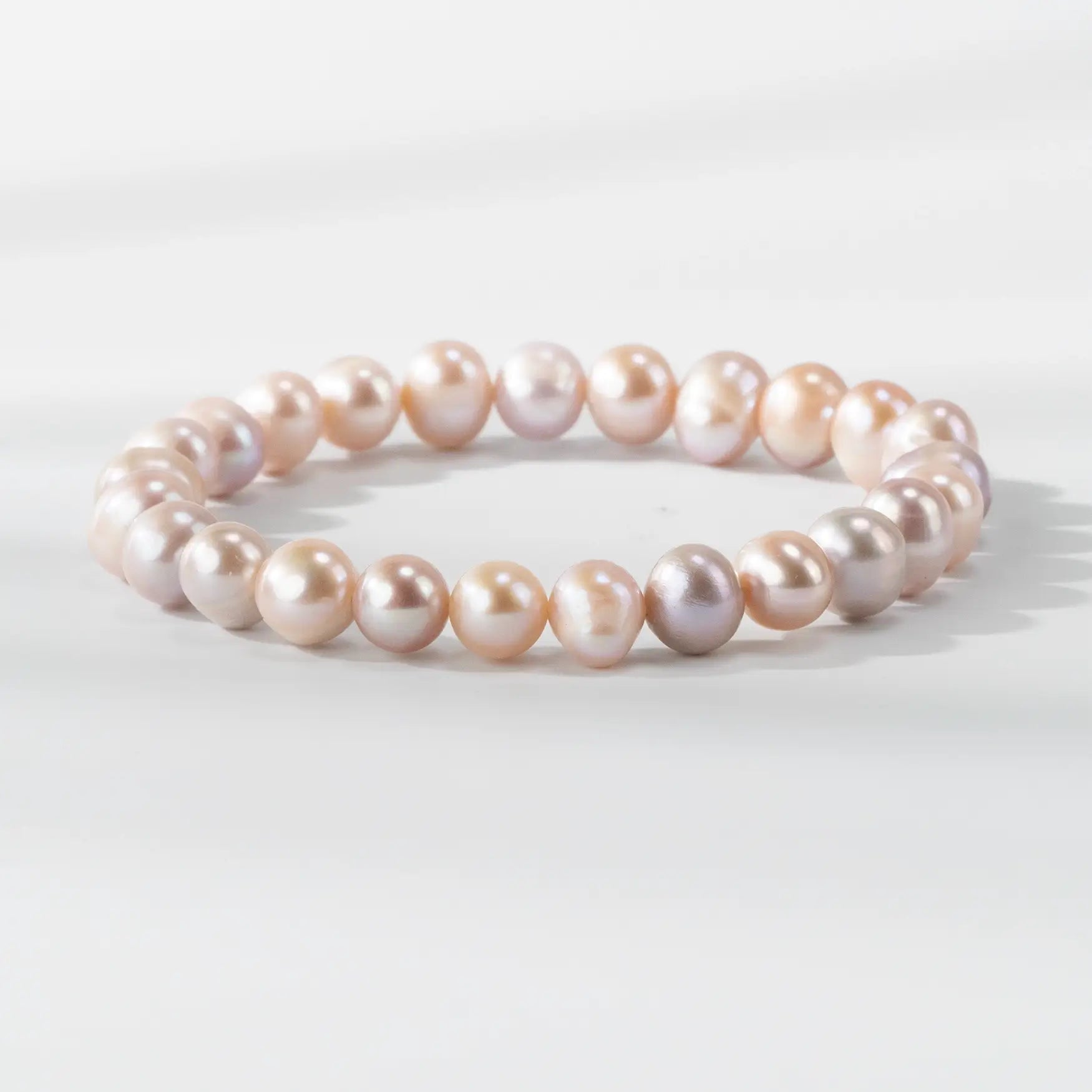Metals matter: Gold, silver, platinum, and stainless steel each respond differently to cleaners. What’s safe for one metal might damage another.
Gemstones are unique: Diamonds are very durable, but pearls, opals, and other softer stones need extra-gentle care.
Product type counts: A solid gold ring can be cleaned differently than a gold-plated piece or jewelry that combines different materials.
Purpose makes a difference: Everyday upkeep, removing tarnish, or restoring shine may each require a different cleaner or method.
We recommend that you avoid exposing your jewelry to liquids, perfumes, and lotions. While our jewelry is made to withstand the elements of daily life, it is not solid gold.
To keep your jewelry looking its best, it is important to clean it regularly. Use a soft cloth or microfiber towel to wipe away dirt and oil buildup. Be sure to keep your jewelry dry.
Tarnish is a chemical reaction that occurs when metal is exposed to oxygen and moisture. It can cause jewelry to become discolored, dull, and even pitted. To prevent tarnishing, it is important to keep your jewelry dry.
Here are some tips for keeping your jewelry dry:
- Avoid wearing your jewelry in the shower, pool, or ocean.
- Take off your jewelry before applying lotions, perfumes, or other skincare products.
- Store your jewelry in a dry place when you are not wearing it.
- Use a jewelry box or bag with a zipper or snap closure to keep your jewelry from getting wet.
- If your jewelry does get wet, dry it off immediately with a soft cloth.
Caring for Sterling Silver:
Preventing Tarnish on Sterling Silver:
- The best way to prevent tarnishing is to store clean, dry sterling silver in a dry airtight container, like a ziplock bag.
- An anti-tarnish strip with the silver jewelry in a ziplock bag will help fight against tarnish.
- Don’t leave silver jewelry in the bathroom. Humidity can speed up the oxidation process that produces tarnish.
- Minimize sterling silver’s contact to chemicals (hairspray, perfume, body lotion, bleach, etc.) and do not wear in shower, swimming pool or hot tub.
- After taking off silver jewelry, clean with a dry soft cloth before putting back into an airtight container.
- A general rule of thumb for silver jewelry: it should be the last thing put on before leaving the house, and the first thing removed when returning home. This will help minimize your jewelry’s contact with perfumes, lotions, and other chemicals.
Cleaning Tarnished Sterling Silver:
- Always remove jewelry before showering or cleaning. A film can form if soap or cleaning agents are not washed off completely. This film will become a magnet for dirt, dust and other contaminants.
- Use a silver polishing cloth to remove oxidation from silver. Tissues and paper towels can cause scratches. We recommend using a Sunshine Cloth. Be sure to use fresh cloths since the dirt and grit left on the cloth from a previous use can leave scrapes and pits. Use light pressure and allow the cloth to do the work for you. If your arm starts to ache, you’re probably pressing too hard.
- Commercial cleaners can be purchased at jewelry stores. Always remember to read the instructions on commercial cleaners first before you attempt cleaning. Most commercial cleaners are very strong and will remove all oxidation! Many of our designs are purposely oxidized then polished, so that crevices are darkened to bring out the depth and beauty of a piece. Take care not to remove this design element. Do not go overboard!
- If you’d like to avoid harsh commercial cleaners and the polishing cloth doesn’t work, wash silver jewelry (without gemstones or pearls) in warm water containing a few drops of mild dishwashing liquid. Immerse sterling silver in water and gently hand wash. Use a cotton swab for tight corners. A soft baby toothbrush can be used for more abrasive cleaning when needed. Thoroughly rinse and completely dry before storing, as moisture is one of the factors that contribute to tarnishing!
- Never clean jewelry in bleach! Doing this will literally break down jewelry. Bleach is an oxidizing agent that will react to the metal, causing it to become very brittle. Remember to remove jewelry before swimming or soaking in a hot tub!
- If the jewelry contains gemstones or pearls, do not submerge the entire piece in water. Instead, use a cotton swab with mild dishwashing liquid to wash only the silver. Again, thoroughly rinse and completely dry before storing, as moisture is one of the factors that contribute to tarnishing! Chlorine bleach, denatured alcohol, turpentine, acetone, and ammonia are all harmful to gemstones and pearls. These chemicals can dull or even pit the surface on softer gemstones, like amber, turquoise, lapis, and more.
- Never use toothpaste or other abrasives to clean metal or stones. Some websites recommend toothpaste as a cleaner, but this is not an accepted practice by fine jewelers. The abrasives in toothpaste can damage the surface of the metal. Toothpaste will also abrade the surface on amber, lapis, turquoise and other soft stones.
- A professional jeweler can either clean sterling silver with an ultrasonic clean or buff with stages of abrasive paper.
How should I care for my Gold Plated jewelry
Metal is particularly reactive in moist or wet conditions. Regions with humid weather like the seacoast and tropical areas are especially challenging for metals as chlorides combine with moisture and perspiration to form a corrosive element.
The best way to maintain the beauty of your gold plating is to take proper care from the beginning. Below are some tips on caring for and cleaning gold plated jewelry.
- Store gold plated jewelry in velvet, satin or any soft fabric-lined jewelry box. You can also wrap in a soft material or place in a re-sealable plastic bag to prevent scratches. Keep all pieces separate from each other to prevent scratching.
- Remove all gold plated jewelry before showering, applying lotion, make-up, hairspray and perfume. Soap and lotion usually won’t harm gold, but it can cause a film residue to form, making it appear dull and dingy.
- Remove all gold plated jewelry before cleaning. Household cleaners and other harsh chemicals will reduce the luster and can permanently damage your gold plated jewelry over time.
- Remove all gold plated jewelry before entering swimming pools, hot tubs and before using chlorine bleach or any chlorine-based cleaning solutions. Chlorine can react with metals, particularly at high temperatures. Exposure to chlorine can erode, discolor and permanently damage gold plated jewelry.
- To clean gold plated jewelry at home, you’ll find many commercial cleaners available. Choose a non-abrasive cleaning material as abrasives can remove the layer of gold plating. Please take care in making sure the product is safe to use on gold.
- Buffing your gold plated jewelry with a soft cloth is an effective and inexpensive way to keep your pieces lustrous. If you use a jewelry polishing cloth, make sure the cloth is meant for polishing GOLD. For example, do not use a Sunshine Polishing cloth, which is formulated for silver and contains micro-abrasives, on gold plating. Using a polishing cloth that is meant for another metal besides gold could permanently damage gold plated items.
- Gold plated jewelry may also get dirty, making it appear dull and dingy. You can remove the dull film with a jewelry cleanser, soap and water, rubbing alcohol, or commercial window cleaner (like Windex), which contains ammonia. Use a soft cloth to carefully clean the item. After cleaning, rinse with lukewarm water and allow it to dry completely.
- If the gold has developed spots, a stronger jewelry cleaner can do the job. Be sure that the cleaning product is designed for cleaning gold and follow the manufacturer’s instructions. We use Tarn-X to remove reddish brown spots that may develop. If a cleaning substance is too strong it can remove the gold.
No matter what kind of gold jewelry, it is a prized possession and whether you are storage it or wearing it, if you want it to look as bright and fresh as the day you bought it. Please remember to keep in mind the below steps. Since gold doesn’t tarnish easily but oils, dirt, and lotions can all leave their mark on your glimmering gold.
Soap and Water
Dish soap and warm water actually works pretty well for cleaning your gold jewelry. Fill up a bowl with some soapy solution and let your jewelry soak for 15 minutes. Then use a soft bristled toothbrush and gently brush your jewelry clean. Use light pressure otherwise your jewellery could be scratched. Rinse your jewellery and then dry it.
Gold Jewelry With Gemstones
Dampen a soft fiber cloth with some soapy water. Wipe the jewelry and rinse it with a wet towel. Leave the jewelry upside down over a dry towel so the moisture doesn’t drain into the gemstones’ settings.
We do not recommend Ultrasonic cleaner, Toothpaste, Alcohol and others solvent
We do not suggest our customer to use the Ultrasonic cleaner, Toothpaste, Alcohol and others unknow solvent for cleaning their jewelry since they may works for some occasions but it may also being result to be an irreversible or even unwanted outcome such as losing diamonds, sketched the metal coating or even corrosive or blur the precious gem stones and diamonds. So please contact our jewelry care expert for the details if there is any hesitation of your jewelry cleaning. And remember, we highly recommend bringing your jewelry for professional inspection at least twice a year.
Natural Bronze
Natural Bronze will oxidize over time, turning a darker, more muted color. Some designers prefer this darker, aged color as it adds character to the metal. One of the benefits of using bronze over other base metals is that much like sterling silver, tarnish can be easily removed with a polishing cloth. To maintain a shiny bright finish for as long as possible, store your bronze away from the air in a ziplock plastic bag and keep it as dry as possible. Do not wear in the shower or store in a humid environment. If you like a high shine, you may prefer using a commercial metal cleaner specifically formulated for bronze or brass. Follow the instructions on the cleaning product.
All metals, including bronze, silver and gold, can react to beauty and cleaning products. Avoid contact as much as possible with perfumes, hairsprays, lotions and household cleaners.
Silver Plated Bronze
Our Silver Plated Bronze has an Anti-Tarnish finish added to it. This will delay the oxidation process. We do not recommend using any kind of polishing compound on the Silver Plated Bronze because the polishing abrasives will remove a layer of silver, which can expose the bronze underneath. Avoid using a Sunshine Polishing Cloth with micro-abrasives that will strip away a layer of silver.
Gold Plated Bronze
Our Gold Plated Bronze is quite stable. Our plating process uses 98.5% or more of pure 24K gold. Very occasionally, the small percentage of other metals may react to factors in the environment like beauty products (perfume, hairspray), exceptionally humid climates and even medications that are released through the skin.
Gold Plated bronze may also get dirty and look dull or dingy. You can remove the dull film with a jewelry cleanser, soap and water, rubbing alcohol, or commercial window cleaner (like Windex), which contains ammonia. Use a soft cloth to gently rub the item with the cleaning agent. After cleaning, rinse with lukewarm water and allow it to dry completely.
Do not use cleaning abrasives on gold plating as they can remove layers of gold, exposing the bronze underneath. This includes the Sunshine Cloth, which is embedded with micro-abrasives. Gold plated bronze can also be cleaned with a chemical commercial jewelry cleaner specially formulated for gold, such as Tarn-X. Follow manufacturer’s directions.
Pearl Jewelry
Cosmetics, perfumes and hair sprays all contain chemicals that can dull the luster of pearls when exposed over extended periods of time. Acids in body oils and perspiration can also damage pearls' luster in the same way. Henceforth, it is better to wear your pearls after applying makeup, perfume or hair spray. By the same token, you should wipe your pearls after each wear with a soft damp cloth to remove any harmful build-ups. Occasional washing is also recommended. Jane’s Pearl World suggests using an unused makeup brush to clean your pearls with warm, soapy water. Afterwards, simply lay the pearls on a towel to dry. The wet string can stretch—and attract dirt, so don’t touch a string of pearls until they are completely dry. Pearls worn every few days should be restrung once a year. Also, pearls should always be stored in separation from hard jewelry items, such as metals and other gemstones, to prevent scratches. It is best to keep pearls in a soft cloth pouch or a separately lined jewelry box. If you plan to wear your pearls several times a week, we recommend that you take the pearls to your jeweler for an annual re-stringing to avoid breakage. The strand must be knotted between every two pearls, both to prevent the pearls from rubbing against each other, and to save them from falling at once, should breakages occur. With proper attention and handling, pearls will last for eternity. But if continuously exposed to harmful products -- such as cosmetics or abrasive detergents, pearls' luster can diminish over time. As a result, light cleaning with a soft, damp cloth after each wear is recommended, along with periodic deep cleaning by a professional pearls business.
Caring/Cleaning Don'ts:
- Never use commercial jewelry cleaners unless they are specifically made for pearls.
- Never use ultrasonic, steam cleaners, detergents, baking soda, bleaches, or any ammonia-based cleansers.
- Do not wear pearls necklaces when their string is wet. Wet strings stretch and attract dirt, which is hard to remove.
- Do not use toothbrushes, scouring pads or abrasive materials to clean pearls. They can scratch the pearl's surface.
- Pearls should not be stored in boxes, or where the air is dry or hot, neither be wrapped in cotton or wool.
Made To Order Rings:
Always give your finger a break now and then. It’s good practice to take it off before bed to let your skin breathe. While you’re doing that, go ahead and clean it up. Here are some tips to keepit shining.
Some general notes about ALL rings - no matter the material, anything can scratch with time. Treat that sparkly band on your finger much like you do your face. A little preventative care goes a long way. But even with all the skin cream in the world - there's no way to ward off the occasional wrinkle. So whether it be a wrinkle or a scratch - we think they add more character.
Gold Rings
Wash with mild soap and water or fine jewelry cleaner. Gold is a softer metal than the others, so it may scratch over time. You can take it to a local jeweler to get it buffed out for a small fee.
Diamond Inset Rings
Diamond inset rings should not be cleaned by ultrasonic nor steam and should be checked by a local jeweler a couple times a year. Besides this, mild soap (dish soap works great) and water work great to shine it back up. Or use one of those fancy jewelry cleaning pens.
Black Zirconium Rings
Use mild soap and water to clean and a soft cloth to dry/polish. Black Zirconium is a two-toned metal, so over time you may see some silver shine through. That is totally normal and it gets even more distinguished with age. Just like you!
Cobalt Chrome Rings
Use mild soap and water to clean and a soft cloth to dry/polish. These guys are more scratch resistant than gold, but they are not scratch proof. A professional buffing at a local jeweler will shine them back up. Kind of like a spa day for your ring. :)
Damascus Rings
While you can totally just wash these with mild soap and water, we recommend a mild toothpaste and toothbrush. Stainless does NOT like Chlorine OR Salt Water, so keep this lady out of the pool.
Dinosaur/Wood Rings
Soap and water is fine to wash it, should you work up a good sweat. We use a premium sealant for these rings, so they can handle more, but we still don't recommend submerging them in water. Also avoid lifting heavy metal items and keep away from harsh chemicals. So leave these at home when you hit the gym, beach or the pool. Everyday showering, cooking, hand washing, etc. is all safe.
Meteorite Inlay Rings
Your ring is sealed with an invisible sealant, but just know - since Meteorite is composed mostly of iron- oxidation and rusting are always possible. Exposure to oxidizing agents such as chlorine, bleach or salt can change the pH of the Meteorite and increase chances of rusting. So can prolonged submersion in water! Chemicals found in household cleaners, pools, hot tubs and even salt water should be avoided. And don't take this lady swimming.
But for serious if you do experience any oxidation, you can use a little baking soda to clean up any rust that appears. Just be sure to always rinse and dry thoroughly. Applying oils will not be helpful.
